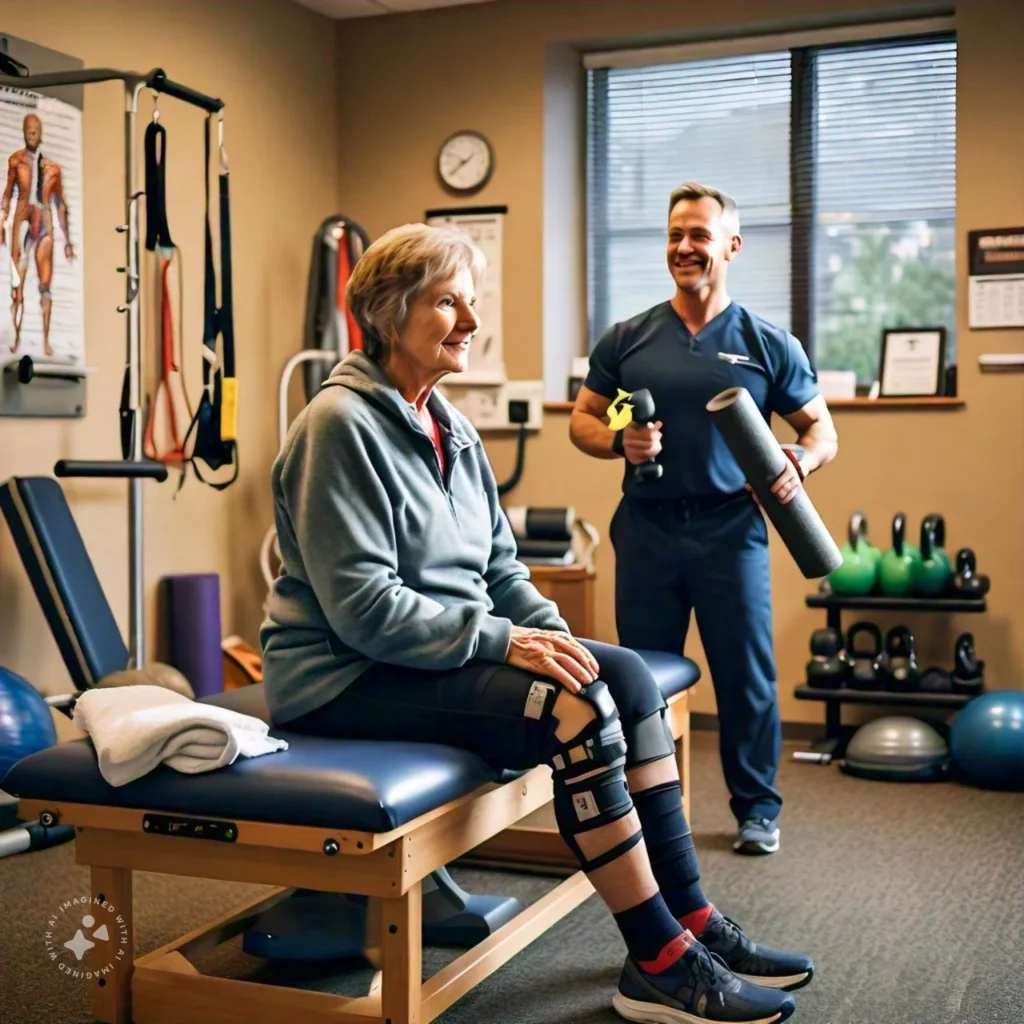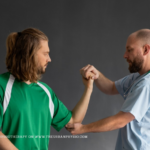You had the surgery. But you still can’t move like you used to?
The operation went perfectly. Your surgeon says everything looks great. The incision is healing. You’re off the heavy painkillers. By all medical measures, you’re “recovered.”
So why can’t you climb stairs normally? Why does your knee still feel weak? Why are you limping months after your hip replacement? Why can’t you trust your repaired ACL during sports?
Here’s the uncomfortable truth most people learn too late: surgery only fixes the structure. Function comes back through physiotherapy.
And here’s what should terrify you: skipping rehab means settling for 50% of your potential—or worse, causing re-injury.
That expensive surgery you invested in? Without proper rehabilitation, you’re getting a fraction of the results you paid for.
The Critical Misconception About Surgery
Most people think surgery is the solution. You go under the knife, the surgeon fixes what’s broken, and you’re good as new.
Surgery is actually just the first step. It’s necessary, but far from sufficient.
Think of it this way: if your house has a broken foundation, you need to repair it. But after the foundation is fixed, you still need to rebuild the walls, reconnect the plumbing, restore the electrical, and make the house livable again.
Surgery fixes the foundation. Physiotherapy rebuilds everything else.
What Surgery Actually Does
Joint Replacement (Hip, Knee, Shoulder) Surgery removes damaged joint surfaces and installs prosthetic components. But it doesn’t restore muscle strength, movement patterns, balance, or coordination. Those all atrophy during your period of dysfunction and surgery recovery.
ACL Reconstruction Surgery rebuilds the torn ligament structure. But it doesn’t retrain the proprioception (position sense), muscle activation patterns, or functional stability you need to prevent re-tearing.
Fracture Repair Surgery realigns and stabilizes broken bones. But it doesn’t address the muscle atrophy, joint stiffness, scar tissue formation, or movement dysfunction that develops during healing.
Rotator Cuff Repair Surgery reattaches torn shoulder tendons. But it doesn’t rebuild strength, restore range of motion, or retrain the complex coordination needed for overhead activities.
The common thread: Surgery addresses anatomy. Physiotherapy addresses function.
What Your Body Actually Looks Like After Surgery
Even after successful surgery, your body is in a severely weakened state. Understanding this helps you see why rehab is non-negotiable.
The Immediate Post-Surgery Reality
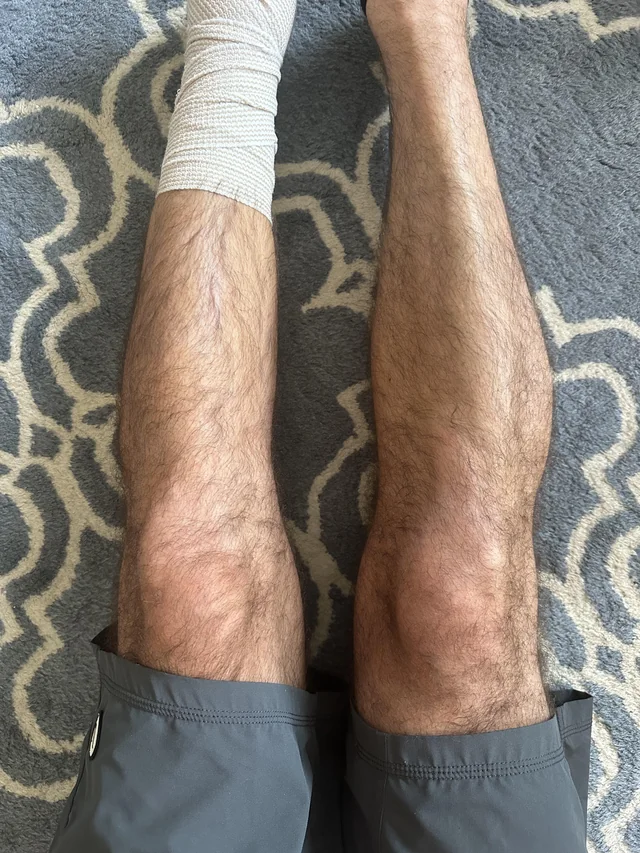
Muscle Atrophy is Dramatic Muscles begin weakening within 24-48 hours of disuse. After surgery, when you’re immobilized or limited, muscle loss accelerates:
- You can lose 20-30% of muscle strength in the first week
- Quadriceps muscles can shrink 10-20% after knee surgery
- Shoulder muscles atrophy significantly after rotator cuff repair
This isn’t cosmetic—it’s functional capacity disappearing.
Scar Tissue Forms Indiscriminately Your body lays down scar tissue as part of healing. Without guided movement, this scar tissue can restrict motion, create adhesions between tissues, and limit flexibility permanently.
Range of Motion Decreases Joints that aren’t moved through their full range develop stiffness. Connective tissues shorten. Capsules tighten. What you don’t use, you lose.
Pain Patterns Change Post-surgical pain and swelling alter how you move. You develop compensatory patterns—limping, favoring one side, using wrong muscles. These become habits that persist long after pain resolves.
Proprioception is Lost Surgery disrupts nerve receptors in joints and tissues. Your brain loses accurate information about joint position, making movements unstable and increasing re-injury risk.
Cardiovascular Fitness Declines Prolonged inactivity tanks your cardiovascular conditioning. Activities that were easy before surgery now leave you breathless and exhausted.
Nervous System Connections Weaken The neural pathways that controlled coordinated movement get disrupted. Your brain needs to relearn how to activate muscles in proper sequences.
All of this happens whether your surgery was technically perfect or not.
Why Rehab is Where Real Recovery Happens
Physiotherapy after surgery isn’t optional enhancement—it’s the core of your recovery. Without it, you’re leaving your outcome to chance.
What Post-Surgery Physiotherapy Actually Does

Progressive Strengthening Systematic rebuilding of muscle strength through carefully progressed exercises. You start with isometric contractions and advance to functional strength training.
Your muscles need to regain not just size but power, endurance, and coordination.
Range of Motion Restoration Gentle, then progressive stretching and mobilization to restore full joint movement. This prevents permanent stiffness and ensures you can move freely.
Without this, joints can remain permanently restricted.
Scar Tissue Management Manual therapy techniques and specific exercises break down restrictive scar tissue and promote healthy, flexible tissue formation.
Proprioception Retraining Balance exercises, coordination drills, and position-sense training restore your brain’s ability to control the joint accurately.
This is crucial for preventing re-injury.
Gait and Movement Pattern Correction Relearning proper walking, climbing stairs, squatting, and other functional movements without compensation patterns.
Bad habits formed during recovery become permanent without correction.
Pain Management Techniques to manage post-surgical discomfort while gradually reducing reliance on medications.
Functional Training Sport-specific or activity-specific training to return you to your actual life—not just basic function.
Preventing Complications Monitoring for problems like blood clots, infection, improper healing, or excessive scar formation.
Psychological Support Recovery is mentally challenging. Your physiotherapist provides encouragement, realistic expectations, and motivation through difficult phases.
The Timeline Nobody Tells You About
Surgery isn’t a one-week recovery. Real recovery takes months of dedicated work.
Typical Recovery Timelines with Proper Rehab
Knee Replacement
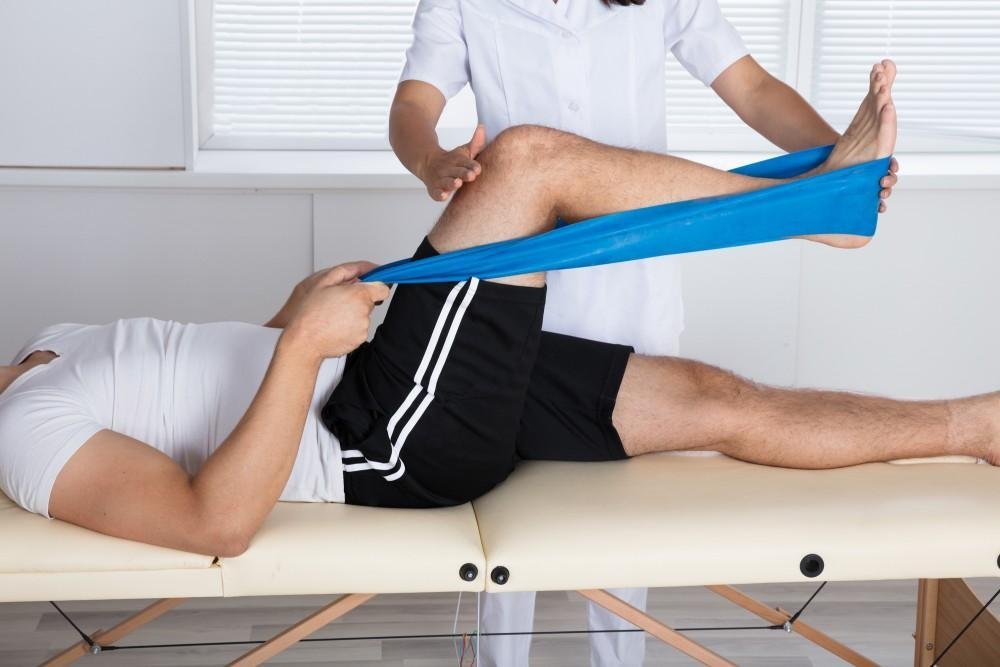
- 6 weeks: Basic mobility restored
- 3 months: Most daily activities manageable
- 6 months: Strength approaching normal
- 12 months: Full recovery and optimization
Hip Replacement
- 6-12 weeks: Walking independently
- 3-4 months: Most restrictions lifted
- 6 months: Strength and function near normal
- 12 months: Complete adaptation
ACL Reconstruction
- 2-3 weeks: Walking without crutches
- 6 weeks: Basic strength work begins
- 3 months: Jogging and agility work starts
- 6 months: Return to sport consideration
- 9-12 months: Full return to competitive sports
Rotator Cuff Repair
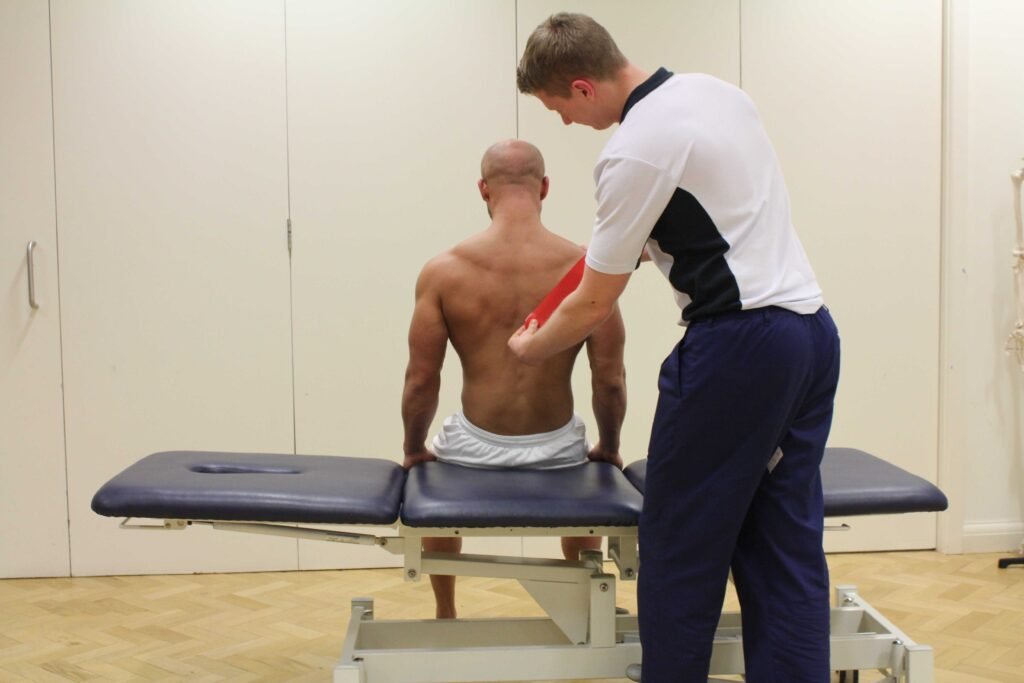
- 6 weeks: Passive motion only
- 12 weeks: Active motion begins
- 4-6 months: Strengthening progresses
- 9-12 months: Full recovery
These timelines assume consistent physiotherapy. Without it, recovery stalls, complications increase, and many people never reach full function.
What Happens When You Skip Rehab
Some people attend a few sessions then stop. Some never go at all. Some do exercises half-heartedly. All of them pay a price.
The Predictable Consequences
Permanent Weakness Muscles that don’t regain strength stay weak forever. You might manage daily activities, but you’ve lost capacity you’ll never get back.
Chronic Stiffness Limited range of motion becomes permanent. You can’t fully straighten your knee, can’t raise your arm overhead, can’t squat properly.
Persistent Pain Weak muscles and poor movement patterns create ongoing strain and discomfort. The surgery removed one pain source but poor recovery created another.
Compensatory Problems Limping, favoring one side, and using wrong muscles causes problems elsewhere. Your good knee starts hurting because it’s doing all the work. Your back aches from altered gait. One surgery leads to more problems.
Re-Injury Risk Skyrockets Without restored strength, stability, and proprioception, you’re vulnerable. ACL grafts can re-tear. Replaced joints can dislocate. Repaired tissues can fail again.
Failed Surgery Outcome In some cases, inadequate rehab means surgical repair fails. Scar tissue restricts the joint. Hardware loosens. The anatomical fix doesn’t translate to functional improvement.
You paid for surgery and got minimal benefit because you didn’t complete the recovery process.
Reduced Quality of Life You can’t return to sports. Can’t play with grandchildren. Can’t work effectively. Can’t live independently. The surgery was supposed to restore your life, but incomplete recovery left you limited.
Need for Revision Surgery Some people end up needing additional surgeries to address complications from inadequate rehab—compensatory injuries, hardware issues, or failed repairs.
Real Stories: The Difference Rehab Makes
The Tale of Two Knee Replacements:
Patient A follows their physiotherapy program religiously. Three months post-surgery, they’re walking normally, climbing stairs, and resuming activities. At one year, they’ve forgotten which knee was replaced.
Patient B does minimal rehab. Three months post-surgery, they still limp, avoid stairs, and move cautiously. Years later, they still have limitations and pain. They tell people their surgery “didn’t work.”
Same surgeon. Same procedure. Different outcomes—because of rehab.
Common Excuses (And Why They’re Costing You)
“It hurts too much.” Some discomfort during rehab is normal—it’s not the same as harmful pain. Your physiotherapist adjusts exercises to challenge you safely. Avoiding all discomfort means avoiding progress.
“I’m doing exercises at home.” Without professional guidance, you likely aren’t doing the right exercises, using proper form, or progressing appropriately. You might be reinforcing bad patterns or skipping crucial elements.
“I can’t afford physiotherapy.” The cost of incomplete recovery—ongoing pain, reduced function, lost work time, potential revision surgery—far exceeds rehab costs. Many insurance plans cover post-surgical physiotherapy.
“I don’t have time.” You found time for surgery and recovery. Rehabilitation is part of that recovery. It’s not extra—it’s essential. Skipping it means your time invested in surgery was partially wasted.
“I feel fine now.” Feeling okay doing basic activities doesn’t mean you’ve recovered full function. Without proper strengthening and retraining, you’re operating at partial capacity and vulnerable to future problems.
“My surgeon didn’t emphasize it.” Some surgeons focus on the surgical outcome and assume you’ll follow through with rehab. Others don’t fully appreciate its importance. Don’t let this become your excuse for incomplete recovery.
What Good Rehab Looks Like
Not all physiotherapy is created equal. Quality post-surgery rehab has specific characteristics.
Starts Early Often begins within days of surgery with gentle exercises to prevent complications and maintain circulation.
Follows Protocols Evidence-based progression specific to your surgery type, respecting healing timelines while maximizing safe advancement.
Individualizes Treatment Adjusts for your specific condition, fitness level, goals, and response to treatment.
Includes Manual Therapy Hands-on techniques to improve tissue quality, joint mobility, and pain management.
Progressive and Challenging Continuously advances difficulty as you improve, pushing you toward full recovery, not just basic function.
Monitors Closely Regular assessment of strength, range of motion, function, and movement quality to ensure proper progression.
Educates Thoroughly Teaches you about your recovery, what to expect, how to self-manage, and how to prevent future problems.
Prepares for Real Life Includes functional, sport-specific, or work-specific training so you can truly return to your activities.
Your Role in Recovery
Physiotherapy requires active participation. Your therapist guides and treats you, but you do the work.
Attend Consistently Regular appointments maintain momentum and allow proper monitoring and progression.
Do Home Exercises The work between sessions is often more important than the sessions themselves.
Communicate Honestly Report pain, concerns, or struggles. Your physiotherapist can’t help if they don’t know what’s happening.
Follow Restrictions Respect precautions and activity limitations. Pushing too hard too fast causes setbacks.
Stay Patient Recovery takes time. Trust the process even when progress feels slow.
Commit Fully Half-hearted effort produces half-hearted results. This is your body and your future—treat it accordingly.
When to Start and How Long to Continue
Start Early Begin physiotherapy as soon as your surgeon clears you—often within days to weeks of surgery. Early intervention prevents complications and optimizes outcomes.
Continue Long Enough Follow your prescribed program through full recovery, not just until you feel better. Premature stopping is a common cause of incomplete recovery.
Most post-surgical rehab programs last 3-6 months for significant surgeries, sometimes longer for complex cases or athletes returning to high-level sport.
Your physiotherapist will guide you on when you’ve truly achieved optimal recovery.
The Investment That Pays Forever
Post-surgery physiotherapy isn’t cheap, and it requires significant time commitment. But consider what you’re actually investing in:
- Full return of function and mobility
- Elimination or significant reduction of pain
- Ability to return to work, sports, and activities you love
- Prevention of compensatory injuries
- Reduced risk of re-injury or surgical failure
- Improved quality of life for years or decades
- Avoiding potential revision surgeries
- Peace of mind knowing you did everything right
Compare that to the cost of incomplete recovery: ongoing limitation, chronic pain, reduced independence, lost opportunities, and diminished quality of life.
The question isn’t whether you can afford physiotherapy. It’s whether you can afford not to do it.
Your Surgery Success Depends on What Happens Next
You’ve already been through the hard part—the decision to have surgery, the procedure itself, the initial pain and discomfort. You’ve invested time, money, and courage.
Don’t let that investment go to waste by skipping the final, crucial step.
Surgery gave you a chance. Physiotherapy turns that chance into reality.
Your surgeon repaired the structure. Now you need to rebuild the function. One without the other leaves you with an incomplete outcome—a technically successful surgery that doesn’t deliver the life improvements you wanted.
Every day you delay or skip rehabilitation is a day further from optimal recovery. Every session you attend, every exercise you complete, every challenge you overcome moves you closer to full function.
The choice is yours: accept partial recovery and live with limitations, or commit fully to rehabilitation and reclaim the life your surgery made possible.
